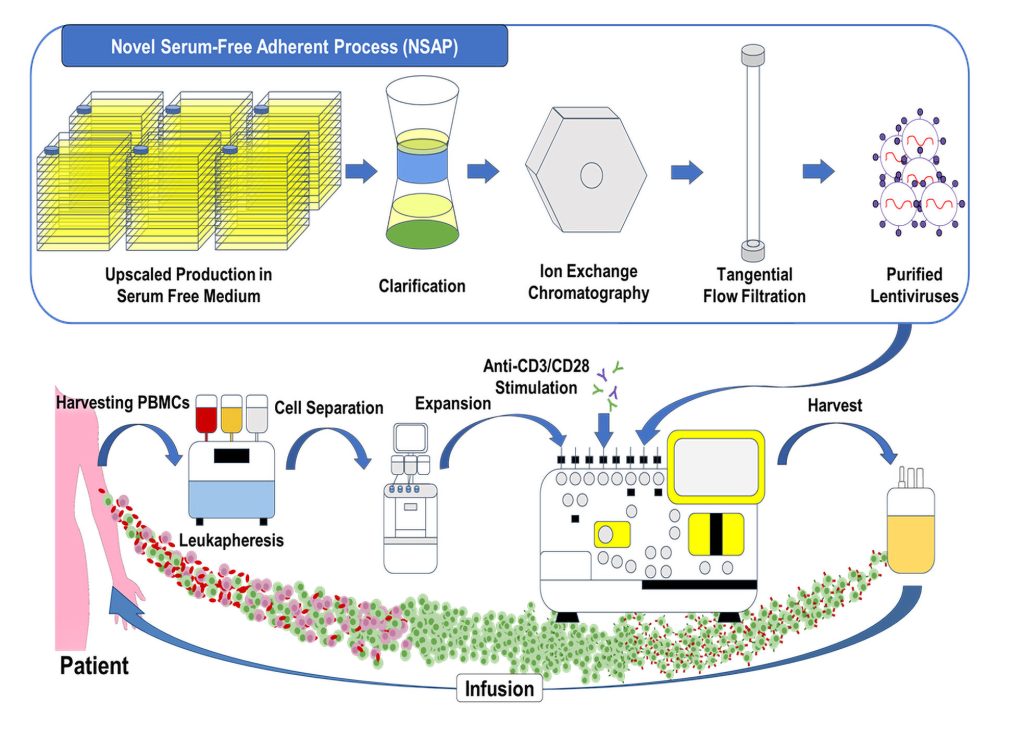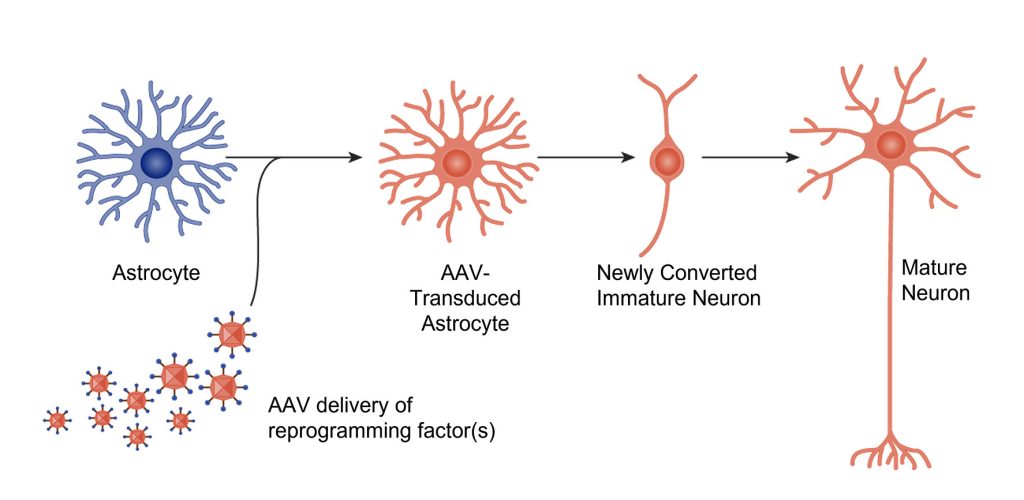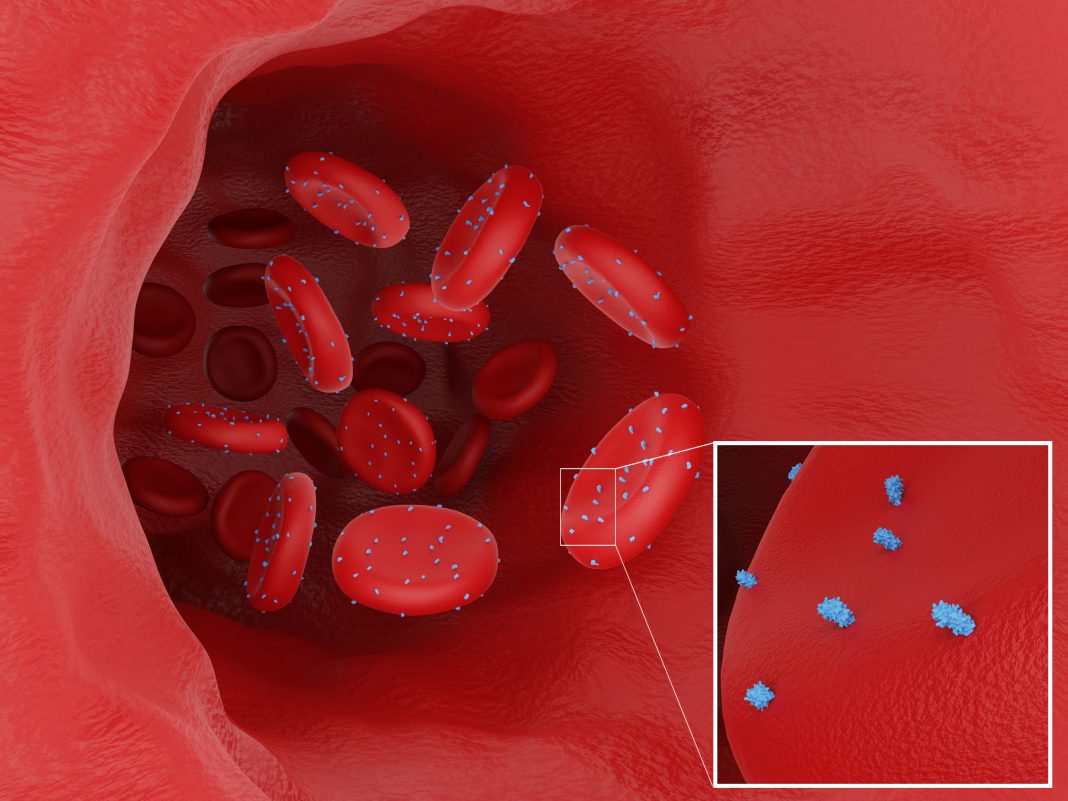Gene therapy is a revolutionary treatment that corrects the genetic root cause of a disease. Genes may be delivered to restore a lost function or to inhibit a deleterious function. The most conventional way to deliver genes is through viral vectors such as adeno-associated viruses. In the last decade, a variety of nonviral methods such as lipid nanoparticles and extracellular vesicles have also been developed. Here, we will look at five biotech startups leading gene therapy in Asia and how their products are making (and will continue to make) a difference to patients.
Optimizing viral vector manufacturing
CellVec is a contract development and manufacturing organization (CDMO) that is dedicated to the development and manufacture of viral vectors. Ultimately, CellVec’s mission is to innovate for patient benefit by transforming therapeutic ideas into clinical practice with vectors designed and built for translational and commercial gene therapies.
According to Paula Lam, head of research and development at Cellvec, accomplishing this gene therapy mission depends on the CDMO’s good manufacturing practice (GMP) facility. She notes that it is certified by the Health Sciences Authority of Singapore, and that it complies with the International Pharmaceutical Inspection Convention and the Pharmaceutical Inspection Co-operation Scheme (PIC/S) guidance annexes for medicinal products. She adds that CellVec also meets requirements particular to the Food and Drug Administration (United States), the European Medicines Agency (European Union), and the Therapeutic Goods Administration (Australia).
CellVec’s manufacturing process utilizes single-use, closed-system technologies and incorporates validated decontamination, sterilization, and aseptic processes in the entire manufacturing chain from upstream processes to downstream processes, including fill-finish operations involving cryobags or vials. Novel technologies used by CellVec include helper packaging plasmids. CellVec asserts that in upstream processes, its plasmids can produce fivefold more lentiviral vectors than can be produced with other tested packaging plasmid systems. The CDMO’s third-generation self-inactivating lentiviral vector can also offer superior transgene expression. In addition, CellVec’s master cell bank (HEK 293T) is preconditioned to enable rapid recovery and enhanced attachment.

Lam notes that in downstream processes, CellVec aims to purify and concentrate via clarification, chromatography ultrafiltration, and diafiltration. She adds that all these operations are carefully optimized because lentiviral vectors are sensitive to mechanical shear, pH, salt concentration, temperature, and buffer osmolarity. “The bioprocessing of lentiviral vectors,” she remarks, “is scalable and takes 15 days to complete.”
CellVec has developed a novel serum-free adherent process for lentiviral vector production. The absence of bovine serum in the process reduces the risks associated with bovine-related disease transmission and is, CellVec insists, more suitable for clinical manufacturing of cell therapy products.
This year, CellVec will launch a new service platform aimed at scaling up manufacturing processes (up to 500 L) for clients at its dedicated process development laboratories. The CDMO is closely working with its partners and collaborators to create a suspension-based manufacturing process in both adeno-associated virus vectors and lentiviral vectors.
“Our goal,” Lam relates, “is to become the CDMO of choice for viral vectors—not just for the region, but for a global market in need of subject matter expertise.” She anticipates that CellVec could meet this goal in five years.
Viral vectors to tackle neurodegenerative diseases
Huntington’s disease, amyotrophic lateral sclerosis, and stroke are some of the most devastating neurodegenerative diseases. They cause massive losses in functional neurons. Worse, whatever treatment options exist are limited even though researchers have spent decades looking for ways to regenerate neurons.
Several techniques such as neuron transplant, stem cell therapy, neuromodulation, nerve grafting, and surgical repair have been tried, but so far without the desired results. However, a new technique—astrocyte-to-neuron (AtN) conversion—shows promise. To realize this promise, NeuExcell Therapeutics has developed an AtN gene therapy platform.

The company was founded in 2016 by Gong Chen, PhD, when he was a professor at Pennsylvania State University. With NeuExcell, Chen hopes to introduce long-lasting treatments that can restore lost brain capacity to patients suffering from neurodegenerative diseases. When Chen moved to Jinan University in Guangzhou, China, in 2020 to lead a Brain Repair Center developing neuroregeneration therapies for major neurological disorders, NeuExcell expanded its operations into China. Today, Chen is NeuExcell’s chief scientific advisor.
At NeuExcell, 75% of the 27 employees on staff are focused on research and development. The company intends to grow. It has raised a total of $20 million and is currently looking to raise an additional $50 million in a Series A investment round.
The core technology of NeuExcell is the use of adeno-associated viruses to deliver transcription factors to reprogram reactive astrocytes into neurons in vivo, without the need for any cellular transplantation. The viral vectors are administered via intrathecal or intracranial injections depending on the location of the damage. Such procedures are frequently performed by neurosurgeons.
“The local injection enables the viral dose to reach the area of damage directly and to be lower than systemic injection, which is a safety advantage,” notes Lori Gavrin, PhD, chief business and strategy officer at NeuExcell.
One of the most important transcription factors in NeuExcell’s technology toolbox is NeuroD1, which has a pivotal role in neuronal differentiation. Depending on the neurodegenerative disease, additional transcription factors driven by specific promoters can be delivered as part of the therapeutic by viral vectors. For instance, the GFAP promoter is used to drive specific expression in reactive astrocytes, and the Dlx2 transcription factor is added to NeuroD1 for transdifferentiation of the reactive astrocytes to GABAergic neurons in Huntington’s disease.
NeuExcell is currently evaluating its gene therapy product as a stroke treatment in nonhuman primates. For example, efficacy, toxicity, and biodistribution studies are being performed to support Investigational New Drug applications. The company hopes to advance the ischemic cortical stroke program into Phase I trials by the end of 2023.
“In the next five years, we hope to have shown clinical efficacy and safety in our stroke trial to benefit patients,” Chen says. “We will continue to expand our AtN platform to deliver therapies for different neurodegenerative diseases and central nervous system injuries. We will also continue to invest in infrastructure including growth within our research sites in Philadelphia and Suzhou, and further extend our patent portfolio.”
Viral vectors to tackle cardiovascular diseases
More than 1 in 250 people worldwide suffer from dilated cardiomyopathy (DCM), a serious condition that reduces the heart’s ability to pump blood and is a leading cause of heart failure. Treatment options are limited, and the only cure is a heart transplant. Prospective treatment options include gene therapies, such as those in development at Nuevocor, a privately held preclinical-stage biopharma company. It raised $24 million in its first financing round and is using the funds to advance its research and bring its innovative cardiac therapies closer to the clinic.
“The majority of genetic cardiomyopathies are inherited in an autosomal dominant manner where just one mutated copy of a gene causes disease,” says Yann Chong Tan, PhD, CEO of Nuevocor. “Gene replacement therapy for autosomal dominant mutations is infeasible as the presence of the mutant allele itself causes cardiomyopathy. Furthermore, a lack of mutation hotspots also makes gene editing impractical because of the small patient numbers.”
Nuevocor is aware that the vast majority of genes that cause cardiomyopathies play a biomechanical role in heart cells. Accordingly, when Nuevocor sets out to understand the root cause of genetic cardiomyopathies, it focuses on mechanobiology. The company has developed a mechanobiology platform called PrOSIA that can be used to design targeted therapies for genetic cardiomyopathies.
Nuevocor’s lead program aims to treat DCM caused by mutations in the lamin A/C (LMNA) gene. LMNA mutations are the number two cause of genetic DCM and confer the worst prognoses with an increased risk of arrhythmogenic DCM and sudden death. The LMNA gene encodes nuclear envelope proteins that form a mesh that resists mechanical stresses on the nucleus. When LMNA mutations result in dysfunctional proteins, the nucleus is unable to resist mechanical stresses. This results in nuclear damage and ultimately leads to DCM.
“Using the PrOSIA platform, Nuevocor developed a therapeutic approach in which adeno-associated viruses deliver a gene therapy encoding a nuclear envelope protein that interacts with LMNA,” details Lee Yin Loon, PhD, co-founder of Nuevocor. “Targeting this gene relieves undesired biomechanical stress to the nucleus of heart cells, thereby treating LMNA DCM.”
Nuevocor’s PrOSIA platform enables the design of therapies to treat LMNA DCM and other genetic cardiomyopathies. Nuevocor anticipates that over the next five years, it will bring multiple programs in the clinic to treat a wide range of genetic cardiac diseases.
Nonviral gene carriers
Today, Ronne Yeo, PhD, is managing director of EVX Ventures. But between 2019 and 2021, he was the founding vice president of Carmine Therapeutics. “We incorporated Carmine in Singapore after analyzing successful biotech investment models and realizing that many promising biotech companies are built by venture capital firms,” he recalls. “We also strategically chose to focus on technology platforms that generate products broadly applicable for different disease indications.”
The technology core at Carmine is the use of extracellular vesicles derived from red blood cells for gene delivery. This approach may be advantageous because red blood cells have been used for blood transfusions for two centuries. Red blood cells are known to be safe, and they are abundant—unlike other cells such as stem cells. Generating sufficient amounts of extracellular vesicles for systemic administration is eminently feasible.
“Viral vectors for gene therapy suffer from limitations such as limited cargo capacity, immunogenicity, and manufacturing challenges,” Yeo notes. “In addition, because of their immunogenicity, viral vectors cannot be repeatedly dosed. This presents challenges for indications where gene expression diminishes because of target cell division.”
“In contrast, our extracellular vesicles derived from red blood cells have a large transgene cargo capacity (>30 kbp), and they can be used to simultaneously carry different types of nucleic acids (RNA and DNA). Because they are nonimmunogenic, we can perform repeat dosing to maintain gene expression in a therapeutic range over the course of the disease.”
Since its launch, Carmine has earned several distinctions. It won Bristol Myers Squibb’s 2019 Golden Ticket to LabCentral, and it listed as a 2020 Fierce 15 Company. It also inked a $900 million collaboration with Takeda Pharmaceuticals.
“Extracellular vesicle–based gene therapy is a new modality in medicine,” Yeo observes. “Over the next five years, our aim is to develop our own class of drugs for different indications, and to overcome all the limitations of viruses to create the mainstay gene therapy vector of the future.”
Yeo is also the chief scientific officer at Carcell Biopharma, an EVX Ventures–founded biotech startup developing engineered red blood cells and lipid nanoparticles for gene therapy.
“One of our product pipelines at Carcell is producing engineered red blood cells that can be used to modulate the immune system in the body,” he details. “We utilize mature red blood cells as a starting material [that has a well understood] drug release profile The advantage of this technology is that the entire production process only takes two days, unlike engineered hematopoietic stem cell–derived red blood cells, which take three weeks to manufacture.”
Leveraging the technologies that have already advanced gene therapies and SARS-CoV-2 vaccines, Carcell is creating a library of lipid nanoparticles for nucleic acid delivery and tissue targeting. Yeo adds that there is rising interest from companies developing nucleic acid–based medicines wanting to collaborate with nucleic acid delivery platforms.
Although it has been incorporated only since September 2021, Carcell has raised $16.6 million in seed financing and is building a research and development and manufacturing site in Shanghai that is due to be complete at the end of 2022.
Carmine and Carcell are currently housed under Nexus, a biotech launchpad set up by EVX Ventures. Nexus provides biotech startups with fully furbished co-working laboratory and office space. EVX Ventures also assists its portfolio companies in talent acquisition, fundraising, and business development.


